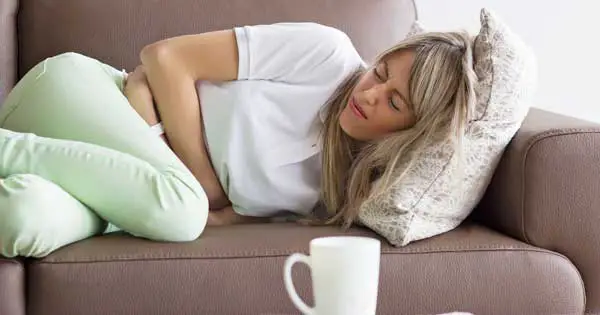So it seems the weather gods finally got the memo that it’s summer – hurrah! Of course, no sooner does the sun come out, than those heatwave health warnings come flooding in.
All very sensible – skin cancer rates have seen alarming rises over recent decades, and if you’re not careful, heat exhaustion can turn into a medical emergency, so slap on the SPF, don’t overdo it in the midday sun, and stay well hydrated.

And, if you need another reason to hit that eight-glasses-a-day water intake minimum that experts advise – consider this: dehydration could be putting you at risk of kidney stones…
What are kidney stones?
As the name suggests, kidney stones are small (or sometimes not so small!) stones that form in the kidneys. There are different types, but usually they’re made up of deposits of calcium, ammonia, uric acid (one of the by-products from when the body breaks down food) and the amino acid cysteine. The medical term for them is nephrolithiasis.
Who gets them?
As Mr Vivek Wadhwa, a consultant urologist at Spire Parkway Hospital in Solihull, notes, kidney stones are quite common and seen across all ages, from children through to the elderly. “But the peak age is about 20-50,” he adds. NHS figures suggest men are slightly more prone to them, with around three in 20 men, and two in 20 women, developing them at some stage. “And we tend to see patterns within certain occupations, and also geographical locations and climates,” adds Wadhwa. “For example, taxi drivers, chefs – people who tend to go long hours without drinking. And the highest incidence of kidney stones at the moment is in Dubai; you’ve got hot weather so people get dehydrated, and they tend to eat a lot of animal protein.”
What causes them?
As Wadhwa explains, while kidney stones can be common, there’s a reason some people are more prone to them. “One of the main causes of kidney stones is not drinking enough fluid,” he says. Put simply, fluids help flush the kidneys and keep things in healthy working order, while diets high in animal proteins can lead to an increase in uric acid, which may cause stones. Higher rates can run in families too, and certain medications are also associated with kidney stones. Sometimes pre-existing conditions, certain inherited conditions or a history of kidney problems can also mean you’re more at risk.
Are they really that painful?
Some stones are so tiny, they can easily go unnoticed, but generally, they are known to be extremely painful. Those tiny tubes aren’t designed to have hard, bulky stones pass through them, so they can trigger an intense pain response that spreads across the back and abdomen. “Ladies always say it’s more painful than childbirth,” says Wadhwa. “It’s excruciating if the stone lodges in the urethra. The kidney’s trying to excrete urine, and it can’t. The main symptom is a sharp intermittent pain in the back, radiating around to the front.”
Can it be serious?
While agonising, often kidney stones are a short-term problem and not serious. However, Wadhwa stresses it’s important for anybody who experiences extreme, acute pain to seek medical attention. Firstly, “you still have to rule out other things, like appendicitis, pancreatitis, ectopic pregnancy, aneurism… Quite often, until we’ve done a scan, we don’t know what we’re dealing with”.
Secondly, if a kidney stone causes a blockage or obstruction, this can rapidly turn very serious. “If you get a complete blockage then the kidney has nowhere to drain and you can get an acute infected obstructed system, and people do die from that,” Wadhwa says. So if you also have a high temperature and fever and are very unwell, it’s important to get to hospital urgently.
How are kidney stones treated?
Treatment usually starts, says Wadhwa, with adequate fluid and pain relief. Often this is all that’s required, but more problematic and larger stones might need further treatment. “If the kidney’s obstructed, you have to de-obstruct the kidney by putting a tube in the back, and then you have to deal with the stone – it all depends on the size and position,” Wadhwa explains. “If the stone’s in the kidney and it’s small, usually it’s shock wave lithotripsy (ESWL, a non-invasive treatment that breaks up stones with shockwaves), and patients will be in and out within an hour.
“Options for bigger stones include using a laser to break them up, and if the stone’s really big, then you do percutaneous nephrolithotomy (PCNL), which means putting a tube directly into the kidney, breaking up the stone and sucking it out. This used to mean cutting open the tummy, but now it can all be done with minimally invasive techniques.”
How can I prevent them?
Once you’ve had a kidney stone, you are at greater risk of having more. However, much of the advice for avoiding kidney stones applies to everybody, since they can be so common. “In the old days, we used to tell patients things like, ‘Don’t drink milk, avoid dairy products etc’, but we don’t tend to do that any more,” says Wadhwa. “What we do say is it’s about a healthy diet, plenty of fluids, high fibre and low salt – those are the main things. I tell my patients to drink at least two to three litres of fluid a day.”
newsletter.html”]
